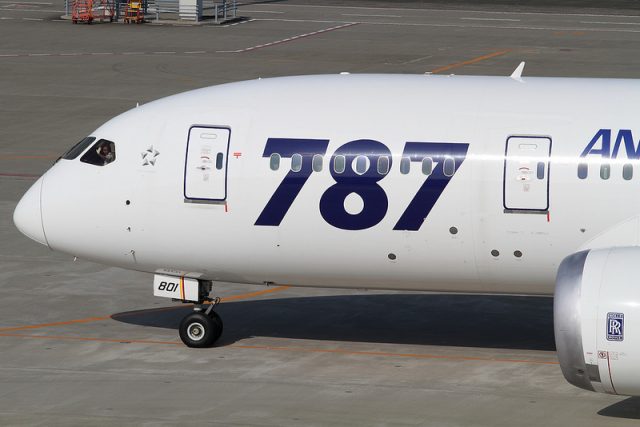
The Boeing 787 Dreamliner was supposed to be the company’s bold entry into the future of air travel—an environmentally friendly, fuel-efficient world traveler. Using 20 percent less fuel than Boeing’s similarly sized 767, it was the most heavily pre-ordered widebody aircraft ever.
But now, the entire fleet of 787s has been grounded because of a series of mishaps involving the plane’s batteries. On January 7, a Japan Airlines 787 just in from Tokyo caught fire at Boston’s Logan International Airport when the batteries in the aircraft’s auxiliary power unit ignited; eight days later, a battery scare forced an All Nippon Airways 787 flying from Yamaguchi, Japan to make an emergency landing and evacuate.
The batteries at the heart of the problem, manufactured by the Japanese firm GS Yuasa Corporation, are essentially giant versions of the lithium-ion batteries used in cell phones and laptops. Like those batteries, the Dreamliner’s use a lithium-cobalt oxide cathode, which is “an inherently unsafe cathode,” said Mark Allen, assistant professor of chemistry and biochemistry at the University of Maryland, Baltimore County. And in the larger form used by Boeing, they pose an even larger risk. When overcharged or damaged, they can become essentially a firebomb inside the airplane—one that burns without air and can’t be put out by usual aircraft fire suppression systems.
Read 14 remaining paragraphs | Comments
from Ars Technica
